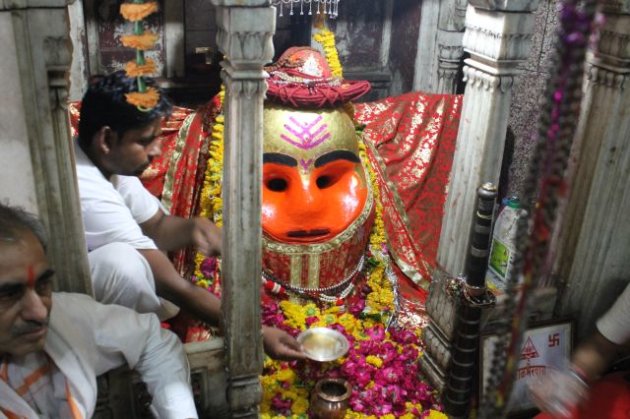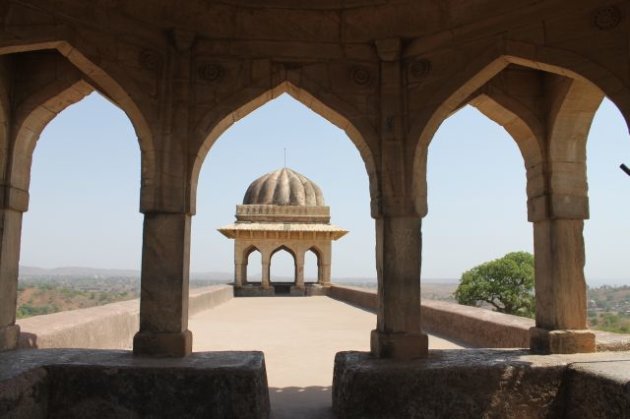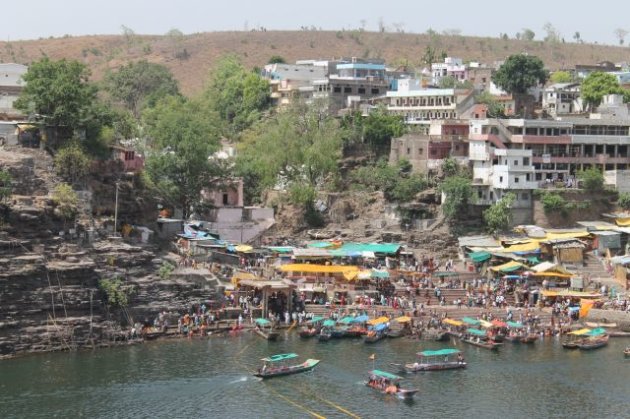
By Matthew Kepnes
Think you don’t have enough money to travel? Think again. Travel guru Matt Kepnes puts that myth to rest with this guide to traveling on little (or no) money.
I recently asked subscribers of my newsletter about the number one thing that holds them back from traveling. The near universal answer?
Money
This is something I hear from everyone I talk to.
“Matt, I simply don’t have enough money to travel.”
This problem and how to overcome it probably my most asked question.
I answer this question in a plethora of posts, e-mails, tweets, and Facebook posts. Long-term readers might even be getting sick of me discussing this subject because it is one I talk about so much. One of the questions on my recent Q&A was about how someone who doesn’t work in travel can actually afford to travel. “What can they do?” they asked me.
Since this question comes up so often, I like to constantly remind people of this fact:
You do not need to be rich to travel.
Let’s repeat that.
You do not need to be rich to travel.
I sure wasn’t. I had an administrative job making $30,000 a year before I left for my first trip. That’s a pretty average entry wage for Boston.
Yet I managed to save enough to travel the world. How? I made it a priority. If travel is not a priority for you, you will always find some other things to spend money on and you’ll never have “enough” money to travel. I never have enough money to go shopping or buy a new electronic gadget because I spend my money on travel, so there isn’t much left over for non-priority expenses. Everything I do is focused on having more money for travel (and other things I love like sushi, movies, and nice dinners)!
What is your savings priority? Is it travel? If it is travel, what is keeping you from saving money? What are you spending it on?
A few months ago, I wrote about the importance of writing out your expenses and then cutting them to save money for your trip. I offered 20 tips on how to do so – the same tips I used before I went away. At the time, I was still paying college debt and yet using those tips managed to save over $20,000 dollars for my initial trip around the world.
“But Matt, I work a minimum wage job/am a student/live on social security/am homeless/insert other excuse here and no matter what I can do, I’ll never be able to do it. I can’t even pay back my student loans. What do I do?”
Work Overseas – Not making enough money at your job? Why not get a job overseas? There are plenty of opportunities in the world as long as you aren’t picky — and after all, this isn’t a career you are starting, it’s just a way to earn money for travel. Here are some jobs you can get to pay the bills and fund your travels:
Au pair
Bartender
Hostel worker
Waitress/Waiter
Farm worker (Very popular in Australia and New Zealand)
Dive instructor (Some certification required)
Tour guide
Cruise ship worker
Casino worker
Seasonal worker at ski resorts
Working overseas often gets discounted as an option because it seems hard to do. It’s not. Just be open. These jobs don’t require advanced degrees or a lot of work experience either. Are you going to get some high-paying office job? No. Will you get a shitty, low-wage job that will pay all your travel bills? Yes! I’ve met people from all walks of life, both from Western and non-Western countries, funding their travels this way.
Here are three websites that can help you find work overseas:
Council on International Educational Exchange Work Abroad Program
Alliances Abroad
BUNAC
Teach English Overseas – One of the best ways to make money for travel is to teach English overseas. You can make a lot of money teaching – I replenished my travel funds while working in Thailand, and I have had friends leave South Korea with tens of thousands of dollars in the bank. All you need is the ability to speak English fluently and maybe a TEFL degree, depending on the country you work in. The world is yearning for teachers and this is a job in high demand- – many companies in Asia will even pay for your flight over.
Here is a basic guide to finding a job overseas and a more advanced in-depth guide for those ready to take the plunge.
Get Free Flights – There are so many ways to earn free flights I hate when people tell me they can’t afford to fly. Sign up for a few travel credit cards, collect miles, and then fly for free. Most cards offer sign-up bonuses of 30,000 points — and if you sign up for both an airline card (think United airlines card) and a general rewards card like the Chase Sapphire or Amex card, you can combine the two point balances and get a cheap flight faster.
Credit card sign ups are the best way to collect miles. I’ve used these sign up bonuses to collect hundreds of thousands of miles.
Can’t sign up for credit cards? There are many ways to increase your mileage balance without credit cards. Three impact ways are:
- Watch out for deals – I sign up for all the airline mailing lists. I always watch out for special 2 for 1 miles deal. Or when they have special card offers to get extra miles. United Airlines just gave me 1,000 miles for watching a demo on their new shopping toolbar. I once got triple miles by buying some clothes from Gap just by seeing it in their mailing list. That doesn’t even utilize all the special bonus offers airlines have on cars, restaurants, and hotels.
- Shop at their member stores – All airlines have special offers with all the big stores- Amazon, Apple, Best Buy, Target, etc. Shopping at those preferred stores will earn you 2 to 4 miles per dollar spent- sometimes even more. If you spend 1,000 dollars a month, you can earn up to 3,000 miles just by going through their websites. The products don’t cost extra. I do all my shopping through the airline malls simply for the extra miles.
- Put everything on the card – I pay nothing in cash. I put everything on my card- from Starbucks to phone bills. My total monthly spending is about $2,500 per month. That’s more miles for me. Everything I do is to benefit my mileage account.
Hitchhike – A free way to get around destinations that is relatively safe and quite common in many parts of the world including Central America, Scandinavia, Eastern Europe, Australia and New Zealand. I’ve hitchhiked in a few places around the world and know many people who have done the same.
Free Walking Tours – Want to learn about the city, get your bearings, and see the major sights? Take a free walking tour. You can find them in 90% of the major cities in Europe, and there are also a few in large Asian cities, New York, Australia, and New Zealand.
Some good free tour companies include:
Australia Free Walking Tours
Big Apple Greeters (NYC)
Athens
Brasov
Bratislava
New Europe Walking Tours (All over Europe)
Housesit – Can’t afford your vacation? Watch someone’s house while they go on theirs. You can sign up for one of the sites below and watch people’s homes for free, allowing you to stay in one destination for a while and get to know it well without having to pay for accommodation. Added bonus: you get a kitchen to cook your food!
Housesitting resources:
House Carers
Mind My House
The Caretaker Gazette
Cook Your Meals – The best way to save money on the road is to cook all your own meals. I recently spent $60 USD for a week’s worth of groceries in Stockholm instead of an average of $15 USD per meal eating out! That’s a saving of $150 USD! If you are Couchsurfing, your host will probably have a kitchen and many hostels, campsites, and guesthouses also have kitchens. No kitchen? Pack your own container and silverware and make some sandwiches and salads on the go. Not every meal requires a stove right?
Just because you are traveling, it doesn’t mean you need to eat out every meal. You won’t ruin your trip to Paris if you decide not to eat out one day! There’s simply no reason to be spending lots of money on food on your trip!
Here is more information on how to lower your food expenses when you travel.
WWOOFing – Working on a farm will get you free room and board, while allowing you to commune with the great outdoors. You have to pay to get to the farm but once you are there, everything else is covered!
And four ways to save money that cost a little but are still very cheap:
Get rail passes – Booking ahead of time can usually save you about 50% of the cost of a train ticket, but if you don’t want to be tied into a fixed schedule, rail passes can save you a lot of money. I’ve saved hundreds in Europe and, in Australia, a train pass saves a whopping 70%.
Sleep in large dorms – Large hostel dorm rooms are the cheapest paid accommodation out there. If Couchsurfing isn’t your thing, this is your next best way to save money on a place to sleep.
Use student and other discount cards – Are you a student, teacher, or under 26? Welcome to the world of 50% off attractions and a plethora of discounts. Get a student/teacher/youth card and save big!
Get city tourist cards – If you plan on seeing a lot of sights in a city, you should get a city tourism card which offers you discounted and free access to the major attractions and museums, as well as free public transportation. I saved over $100 dollars with the London pass, $80 with Paris Museum card, $50 with a Helsinki card, and tons more with other city tourism card. They are an amazing way to save money on attractions that not enough people use.
Between all of these tips, you’ll be able to travel for relatively little money. After all, I recently spent 5 days in Stockholm on $100 and once spent 10 days in London on $700. If I can do it, you can do it too.
A Real World Example

Travel hacking, or the art of getting everything on miles, is the best way to travel cheaply. So let’s create an example using the tips above. Say you want to go to Australia for two weeks. It’s a long way and Australia is an expensive country. How do you do it without busting your budget?
Flights – It takes about 70,000 miles for a round-trip flight to Australia from United States. You can earn that many miles by signing up for these two cards:
United Airlines card (30,000 miles)
Chase Sapphire card (40,000 miles)
or sign up for two American Airlines card (40,000 miles per card)
Or you can simply pay the $1,500 USD for the flight!
Cost: about $100 USD in taxes and fees for your flight using miles.
To find out more about using credit cards and miles for free flights, read this article. And while I used the US an example and we have the most deals, there are a number of reward cards for Canadians, UK citizens, and Europeans.
Accommodation – Couchsurfing while you are in Australia will allow you to stay with locals for free, plus you’ll have access to a kitchen where you can cook your meals and save money for traveling. There are a lot of people on Couchsurfing in Australia and it’s very easy to find someone to stay with. Additionally, Global Freedloaders also has a lot of users in the country.
Cost: $0
Food – A friend of mine once told me they simply get screwed with the price of food in Australia and it is true! However, if you cook your meals, expect to pay $70–80 USD per week. For that price, your groceries will include pasta, vegetables, chicken, and some other basic foodstuffs. Because food costs so much, campsites, hostels, apartments, and even some budget hotels have kitchen facilities for you to use. An average restaurant meal in Australia will run you around $15 USD for no-frills eating. This includes pub food, fish-and-chip shops, Chinese restaurants, and quick lunch shops. If you are staying in hostels, most offer meals each night for $6 USD and under. They call these “Special Backpacker meals,” and the food is typically pasta, fish and chips, or burgers. It’s not very healthy, but it is very cheap.
Cost: $100 – 300 USD (Assuming you alternate cooking your own food and eating out a few times.)
Transportation – The easiest way to see Australia is via Greyhound, and they offer good value bus passes. On the popular Sydney to Cairns bus route, a normal bus ticket is about $400 USD for a direct one-way trip. However, the pass for the same route is typically $350 and lets you hop off and on as much as you would like. Not only is the pass cheaper, but it allows you to see other destinations along the way.
Another popular and cheap way to travel around Australia is to rent a van and drive yourself. Campervan and car rentals do two things: they lower your transportation costs because van rentals are really cheap and driving yourself is cheaper than taking the bus or flying. They also double as a bedroom, so you can save on accommodation by sleeping at a campsite instead of a hostel. You can rent these for about $35 USD per day.
Using web classifieds like Gumtree or hostel message boards can allow you to find travelers looking for rides or those wanting to get rid of their car. Taking on a few travelers to share the cost of the van and gas can cut your transportation/accommodation expenses to less than $20 USD per day! (Or use them to hop rides with other people and only pay for gas!)
Cost: $100 – $400 depending on which method you use.
Activities – Activities are really expensive in Australia, generally costing $150–400 USD. For example, a one-day trip to the Great Barrier Reef can cost $170 USD, while two nights sailing the Whitsunday Islands can cost upward of $400. A three-day trip to Uluru from Alice Springs is around $355. A day trip to Kakadu National Park is around $100. There’s really little ways to get around these costs if you go with a tour company. If you organize a trip on your own, you can cut the costs by about 50% depending on the activity.
Assuming you pick the two big activities with a tour company, you’re looking at about $600 USD.
Cost: $600
Total cost: ~ $1,400 USD (or less)
(It should be noted that once you are “on the ground” everyone pays the same local price. Travel hacking works for everyone because on the ground, we all hack the same way – no matter what your nationality.)
Looking at the itinerary above, I didn’t compromise a lot. True, you’ll be staying with other people and cooking your own food, but that’s not the end of the world. (These tip work even if you are traveling as a pair since sites like Couchsurfing do accept pairs.)
I often talk about how you can travel around the world for $50 USD per day. While this particular journey works out to be $100 per day, but my aim here is to highlight that while in this example you aren’t able to stretch your costs out over a long period of time (which is how you lower expenses), a two-week vacation doesn’t need to cost a huge sum of money. If I can go to London for $700 and design a two-week trip to Australia that costs $1,400, then the argument that you must be rich to travel holds absolutely no water. You don’t need thousands upon thousands to travel. In fact, while $1,400 is a lot of money, that is the maximum amount of money you would need as there are still ways mentioned in the example to lower your costs even more.
The key is to get out of the mindset that you must travel using the flight/hotel combination. While my real world example doesn’t utilize all the bare bones tips I included in the beginning of this post, it does highlight one thing – using out-of-the-box, non-traditional ways to travel can lead to big savings.
And that turns travel from a dream into a reality.




















 In a conversation on Facebook with
In a conversation on Facebook with
